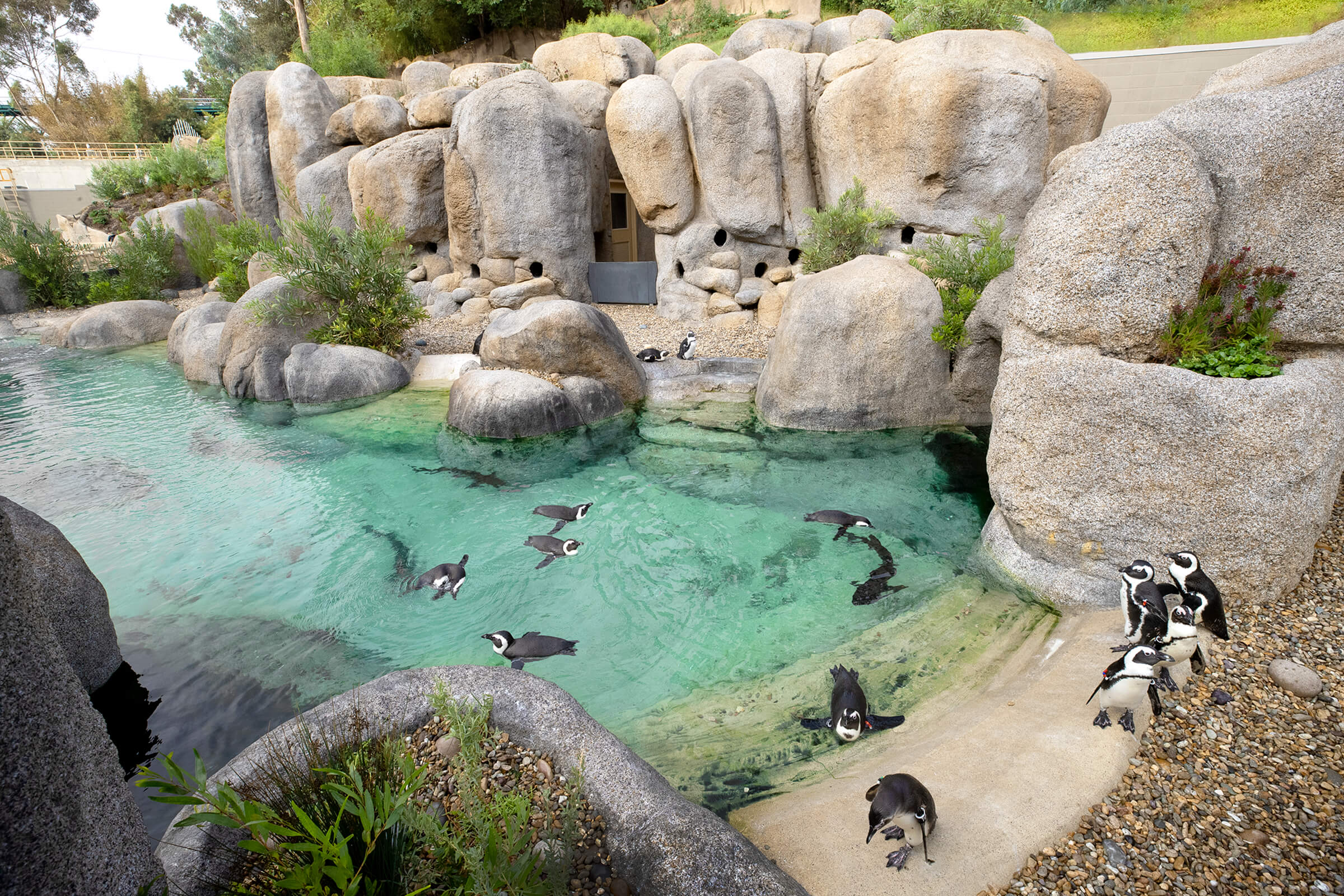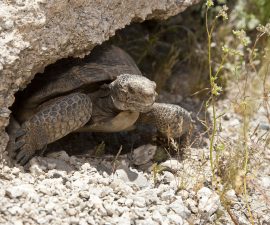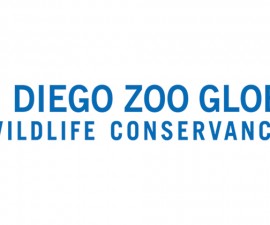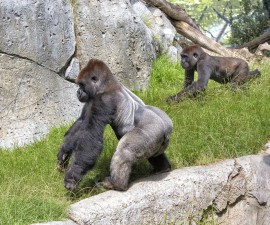BY Eston Ellis
Photography by Ken Bohn
World Penguin Day is April 25, 2019, and it’s a time to celebrate these remarkable birds that “fly” through the water instead of the sky. However, every day is “Penguin Day” at the San Diego Zoo’s Conrad Prebys Africa Rocks, with scores of people visiting to watch the latest antics of our lively colony of African penguins.
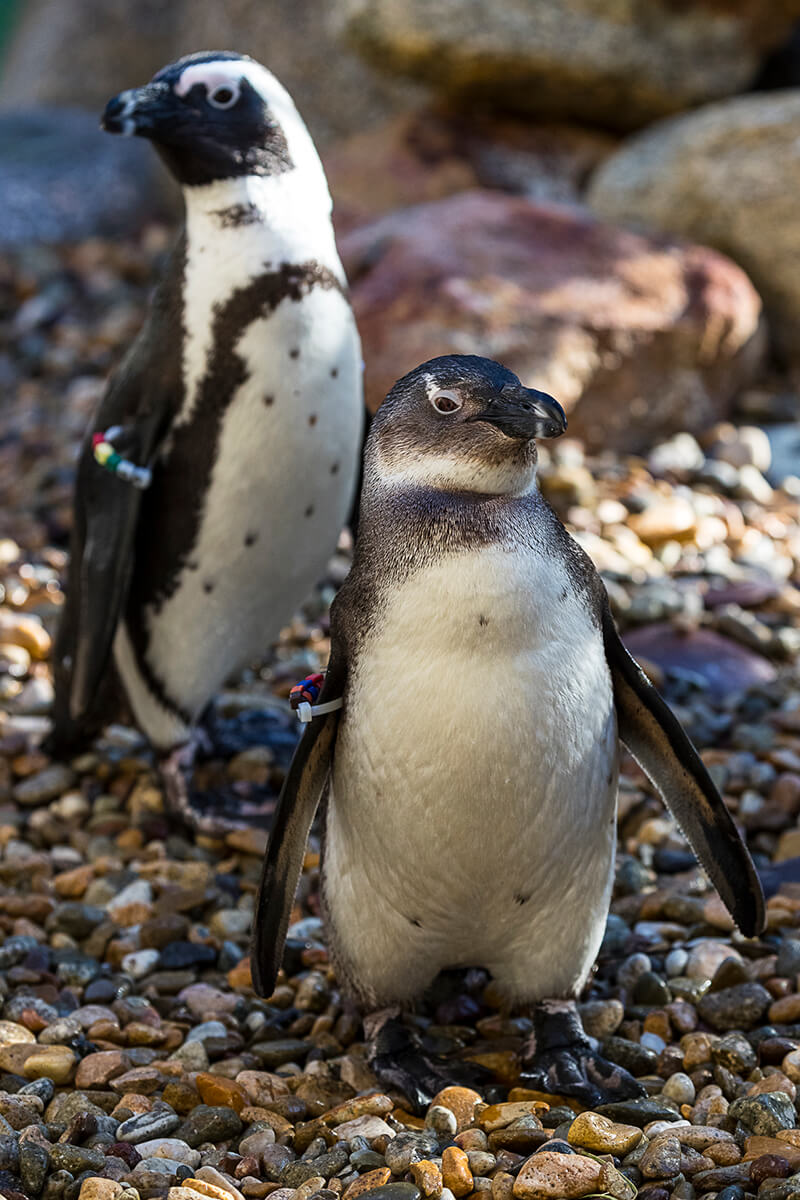
YOUNGSTERS ON THE BEACH
One-year-old Dot (in the foreground) spends a lot of quality time with keepers, since she is not old enough to be interested in a mate.
The colony at Africa Rocks, which opened in 2017, is relatively new, and most of the birds recently reached breeding age, explained Joop Kuhn, animal care manager. “They have all paired up except the two one-year-olds, Dot and Lucas. We’re not calling these partnerships for life, though, as some of those relationships are tenuous at best.” Penguin keeper Debbie Denton remarked, “Their hormones were going crazy: this exhibit was like eighth-grade detention,” during the past breeding season. “Once they molted into adult plumage, males would show up and pick fights for no reason. And females that previously were very sweet to keepers suddenly were a lot more interested in spending time with the boys.” There’s also one adult, not-yet-paired male, but he is known to hang out with a female that is not always faithful to her paired partner. And there are two same-sex pairs that are devoted to each other and built nests: Sam and Moe, and Hoover and Rocko.
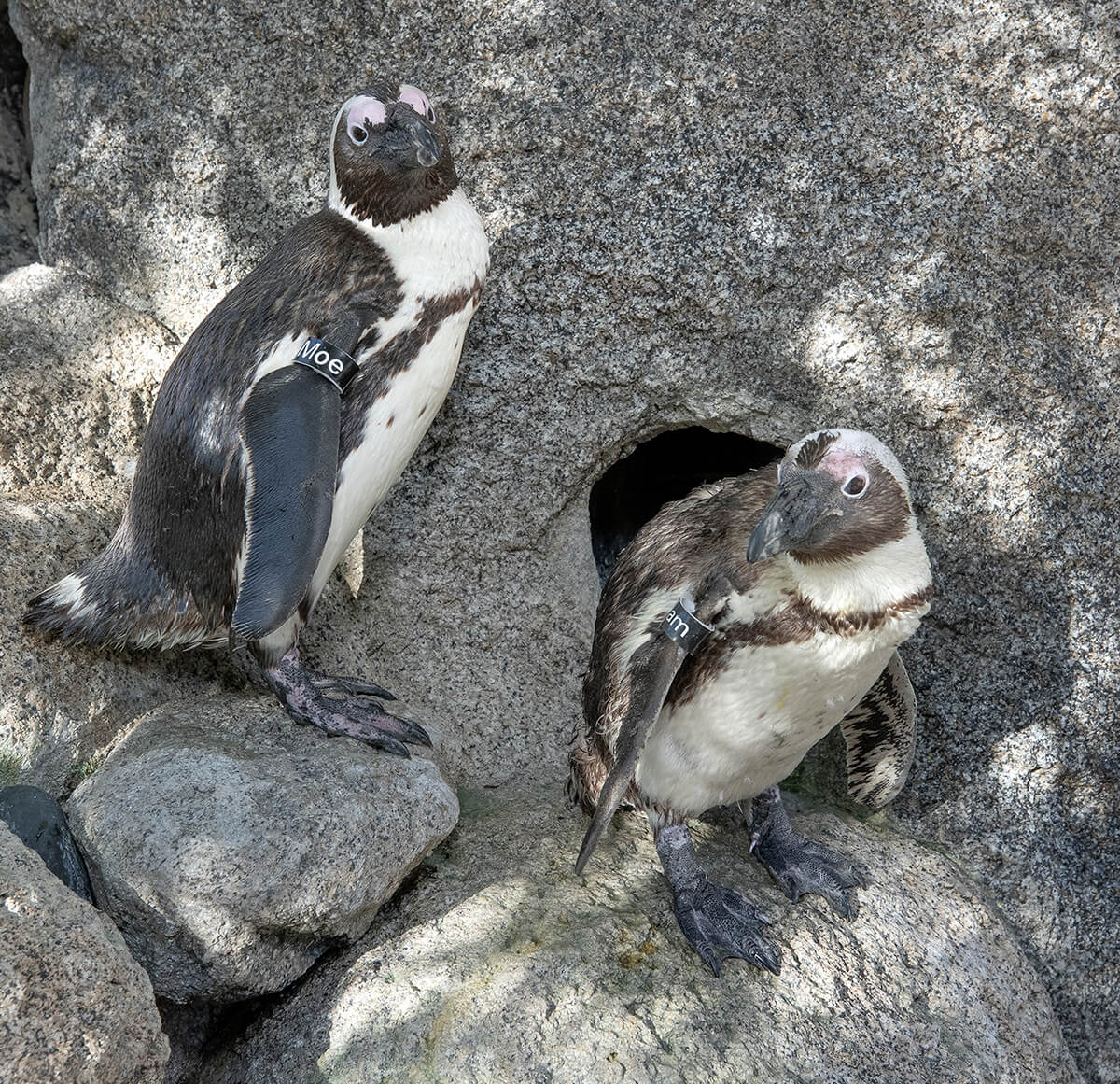
BEST FRIENDS
Moe and Sam, a same-sex penguin pair, are devoted to each other and have built a nest together.
During the breeding months, the birds were busily gathering nesting material. “They used up all the pampas grass we offered them,” Debbie said. “After that, they were pulling leaves down.” The penguins were tucked away in nest boxes most of the day and would come out in the morning and in late afternoon when keepers were feeding them. Males defended their nest area—and sometimes a wide area around the nest—warning others to stay away. Keepers kept checking nests for eggs, and candled eggs laid by the penguins to check for fertility. In weeks ahead, keepers will be watching how the new penguin parents are doing.
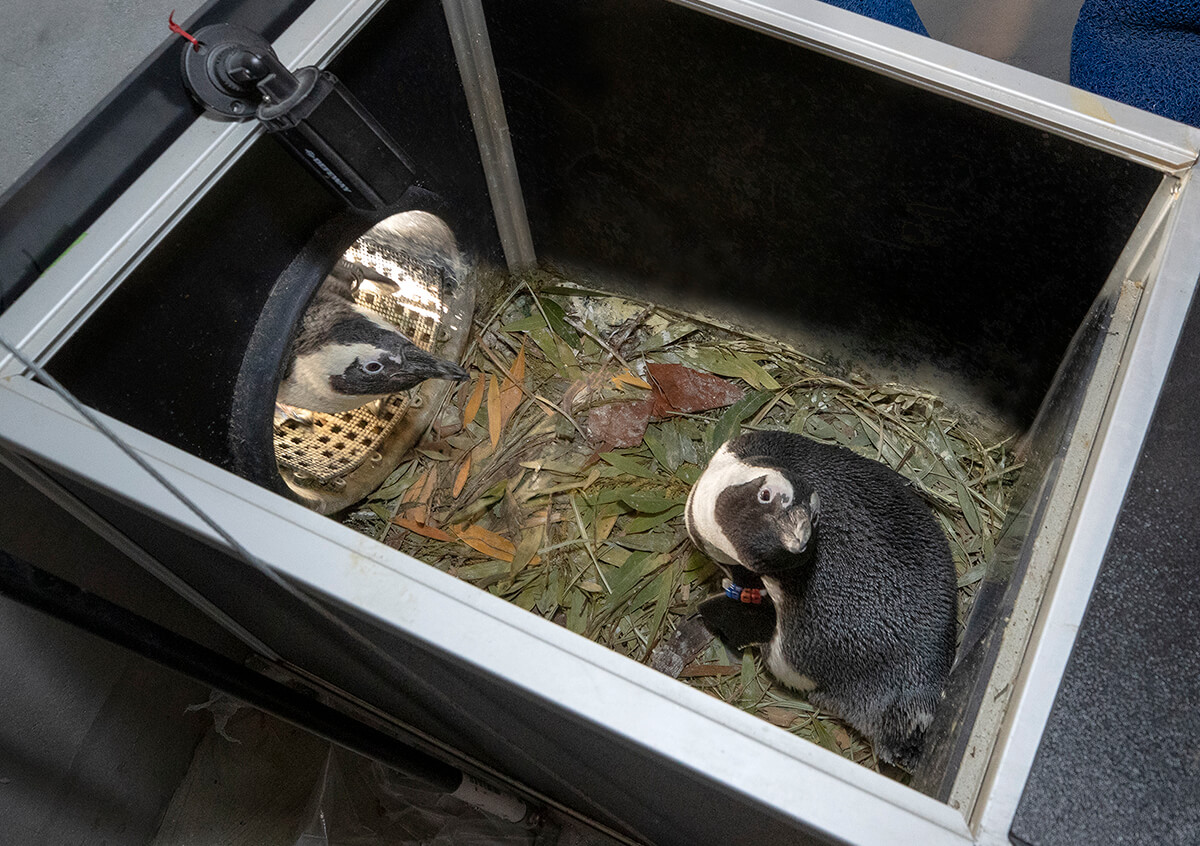
BEHIND THE ROCKS
Penguin pairs personalize their nest boxes—tucked behind the rockwork of Penguin Beach—with fresh, soft leaves.
After spending most days from September through March on shore, nesting, laying eggs, and incubating them, the colony is now spending more time in the water again. “When we shut burrows down at the end of this breeding season, at the end of February, they were out and about again, spending more time in the pool,” Joop said.
With 31 African penguins—ranging from 1 to 27 years old—sharing a rocky beach and a 200,000-gallon saltwater pool with underwater viewing, there are many stories to tell in the Dan and Vi McKinney Penguin Habitat. For instance, there’s the story of Prince. He hatched on the same day that his namesake rock musician died, and he wears a purple ID band. Then there’s Vi, the 27-year-old matriarch of the colony, who has paired up with a protective and much younger male named Mac. And there’s DG, who came to the Zoo with his longtime male partner Harlan—who then left him for an older female named Katy. DG’s second attempt at pairing up, with female Lori, failed when Lori went back to her former mate, Jack—leaving DG to spend more time following around the keepers who care for him.
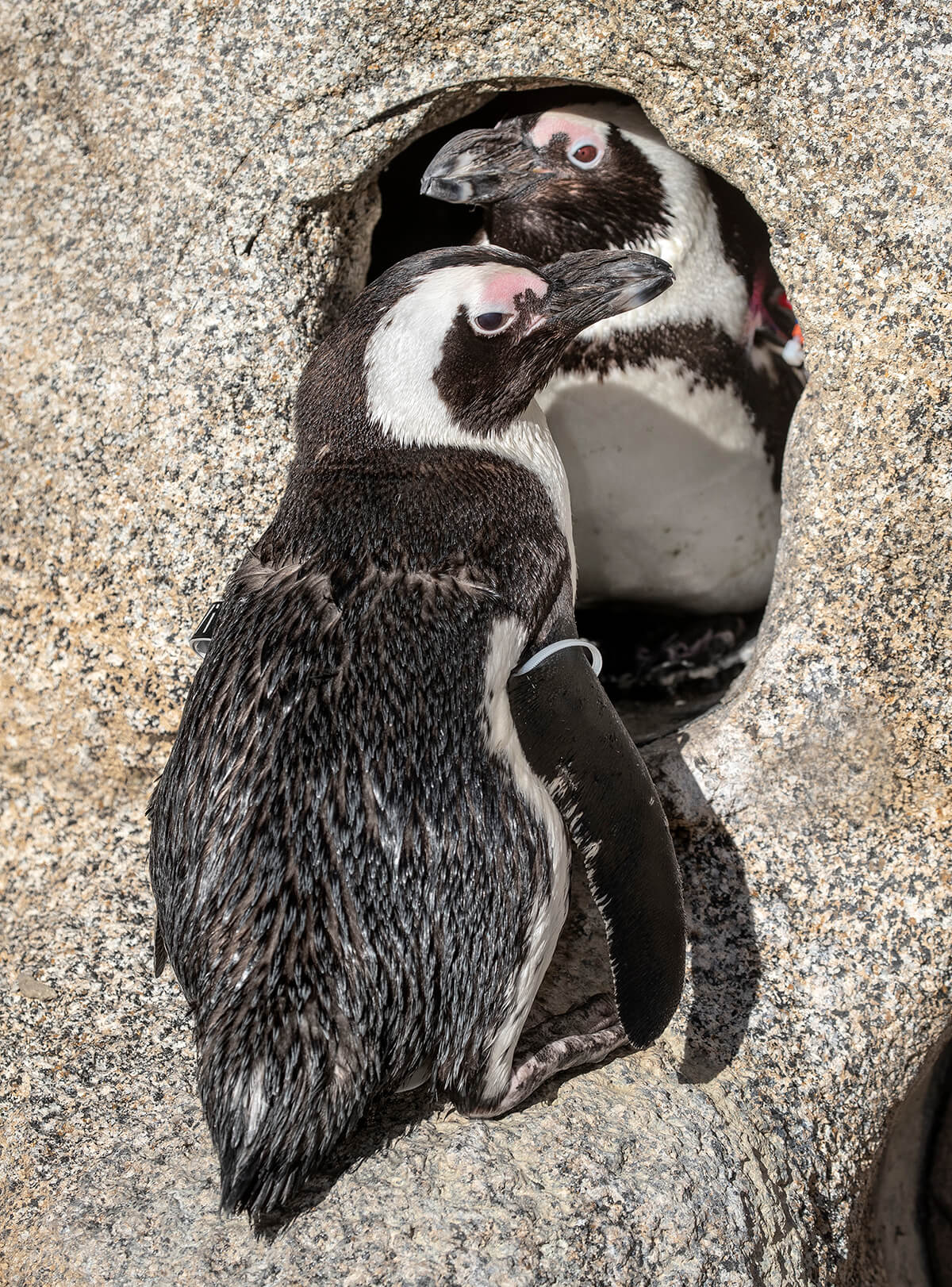
A PENGUIN, NOT A COUGAR
At age 27, Vi is the oldest female. Mac, her much younger mate, is very protective of her.
There are so many stories, in fact, that a new Facebook video series is being created to share them. You can follow all the ins and outs of everyday life in the Cape Fynbos penguin colony on Penguin Beach, soon to make its debut on the San Diego Zoo’s Facebook page, Instagram, and this website.
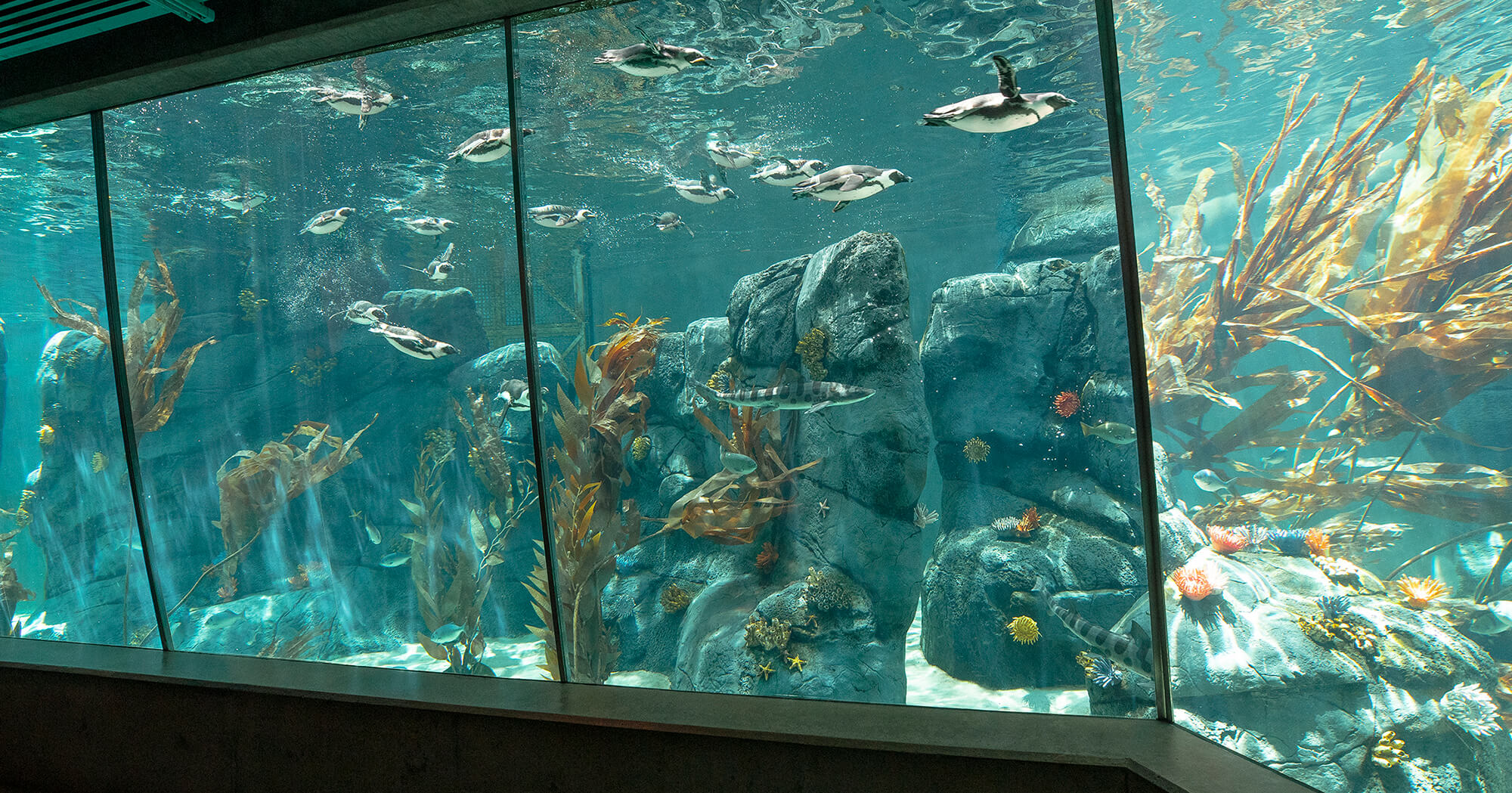
SWIMMING WITH SHARKS
African penguins and leopard sharks can often be seen swimming in close proximity at Cape Fynbos, seemingly ignoring each other most of the time.
Being Neighborly
The penguins share their pool with leopard sharks and other local marine life, including opaleye, sargo, and blacksmith, and all coexist together without incident. Leopard sharks do not prey on penguins, and the penguins usually seem to ignore the sharks, even if they’re swimming in close proximity. The penguins also mostly ignore the smaller fish, since the colony gets hand fed by keepers. They eat whole herring and capelin, with silversides given as a special treat, and they swallow these fish headfirst—so that the fish’s scales don’t catch in their mouth or throat.
“The sharks initially avoided the penguins—although the penguins were very interested in chasing them around, at the start,” Debbie said. “But it has been some time since they were introduced, the penguins seem to have lost interest in the sharks, and the sharks now mainly interact with each other. The fish in the pool have learned the penguins’ behavior. Everybody has learned—when the silversides come out, it’s feeding time, and the fish in the pool hide.”
The leopard sharks have grown quite a bit since they first arrived at Africa Rocks. If you haven’t visited the pool at Cape Fynbos for a while, you might be surprised at how big they’re getting!
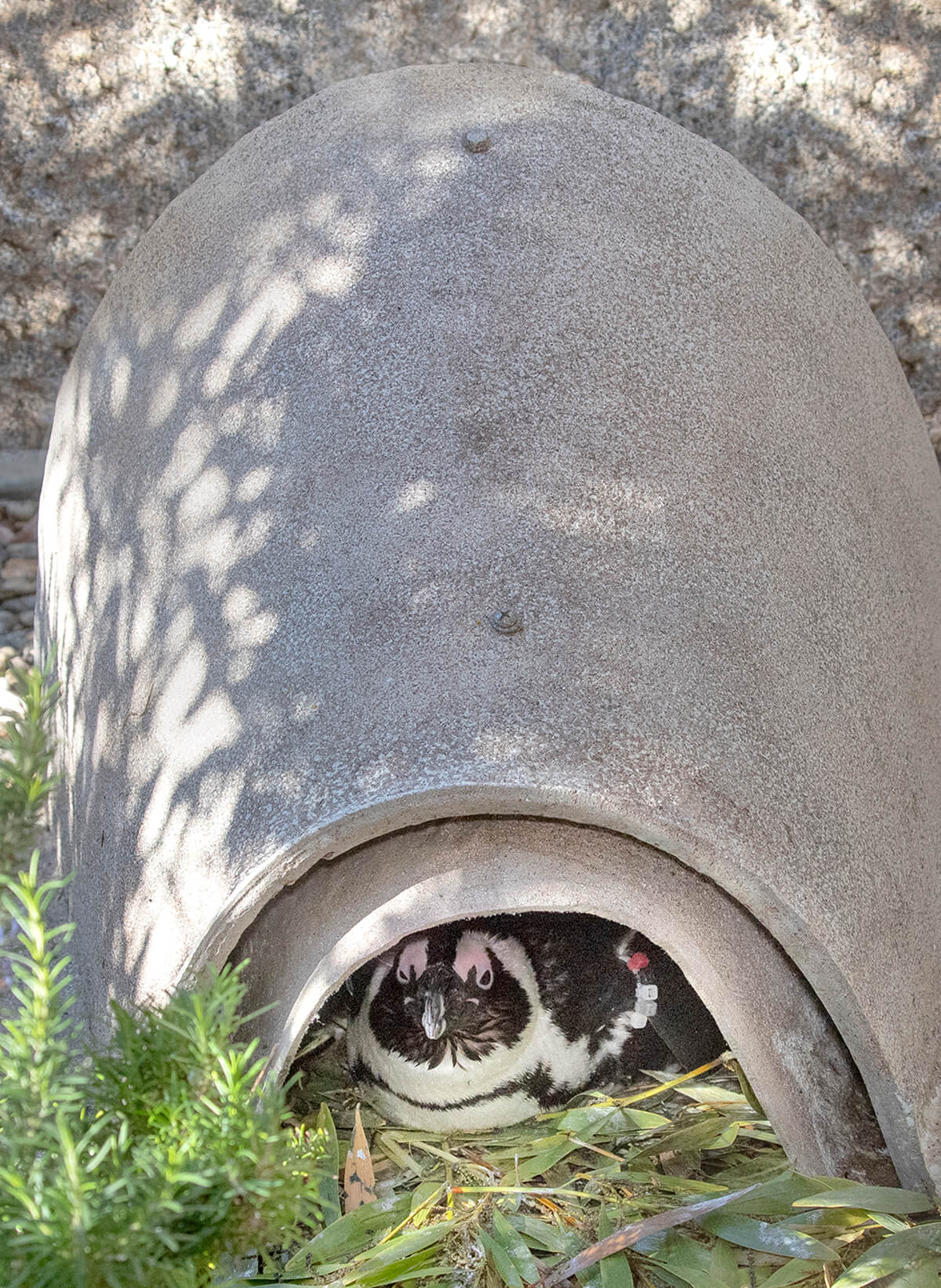
PERFECT PREFAB NEST?
In a test of 21 human-made nest boxes for eventual use in degraded South African penguin habitats, this one proved to be the most popular design—with 80 percent occupied by birds in the first 30 days of testing, and 70 percent having eggs laid in them.
Committed to Conservation
Unlike their cold-weather cousins, African penguins make their home in the warm climate of coastal South Africa and Namibia. They are categorized as Endangered on the International Union for Conservation of Nature’s Red List of Threatened Species, and their population has decreased by 60 percent in the past 30 years. Historically, harvesting of their eggs and commercial collection of the guano (penguin droppings) which they use to build their burrows started the decline of the population. But their numbers have dropped most recently due to illegal overfishing by international trawlers in South African waters; movement of their primary prey items farther away because of shifting ocean currents; and pollution, including oil spills. Through the Association of Zoos and Aquariums’ Species Survival Plan (SSP), the Zoo is working to help build a healthy assurance population of African penguins.
In addition to participation in the SSP program for African penguins, San Diego Zoo Global is involved in conservation efforts in South Africa—and some of those efforts involve work at the Zoo. For instance, San Diego Zoo Global participated in a test of various artificial nest box designs for eventual use in the African penguins’ home habitat—and tests of these nest boxes took place both in Africa Rocks and in South Africa. One design that looks something like a cross between an igloo and an archway performed the best of all 21 versions tested: 80 to 90 percent were occupied by birds in the first 30 days of testing, and 70 percent had succeeded with oviposition (eggs!).
.
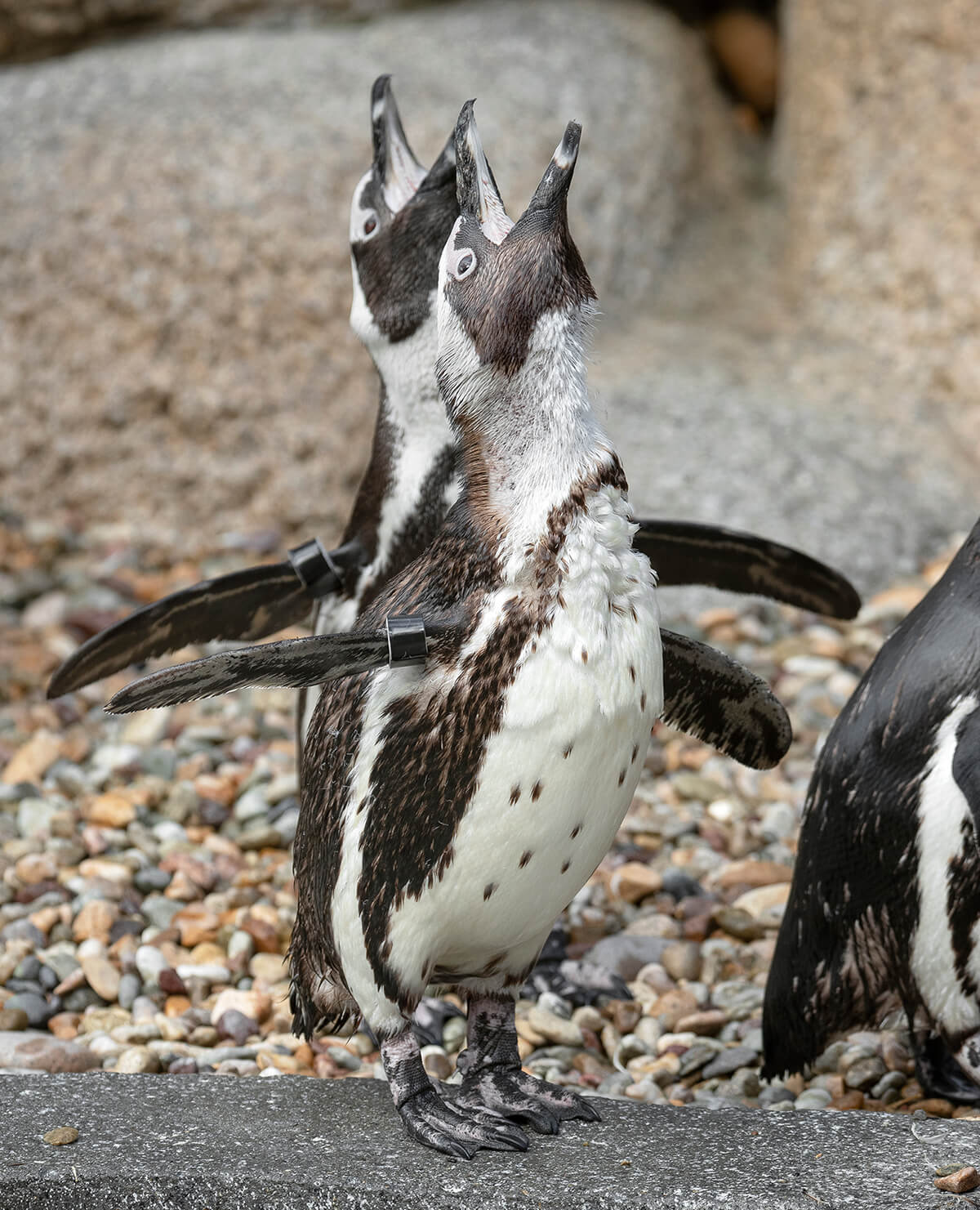
MOUTHS TO FEED
At Cape Fynbos, the African penguins get hand fed on the beach each morning, shortly after the Zoo opens at 9 a.m. They get a second feeding in the afternoon—and both feedings attract crowds of both penguins and guests.
“Our conservation efforts are multifaceted,” Joop said. “We work with SANCCOB (the Southern African Foundation for the Conservation of Coastal Birds) and participate in the rescue, rehabilitation, and release of wild penguins.” San Diego Zoo Global also provides funding for fitting South African penguins with passive integrated transponders (PIT tags) that track their movements around various colonies. “Already, information from PIT tags has indicated that penguins from one colony may end up in another colony—so, we’ve learned that colony populations are not genetically unique.” In addition, San Diego Zoo Global funds research for additional GPS tracking of wild birds, and the Zoo’s Veterinary Services department is involved in an avian malaria study with birds at SANCCOB.
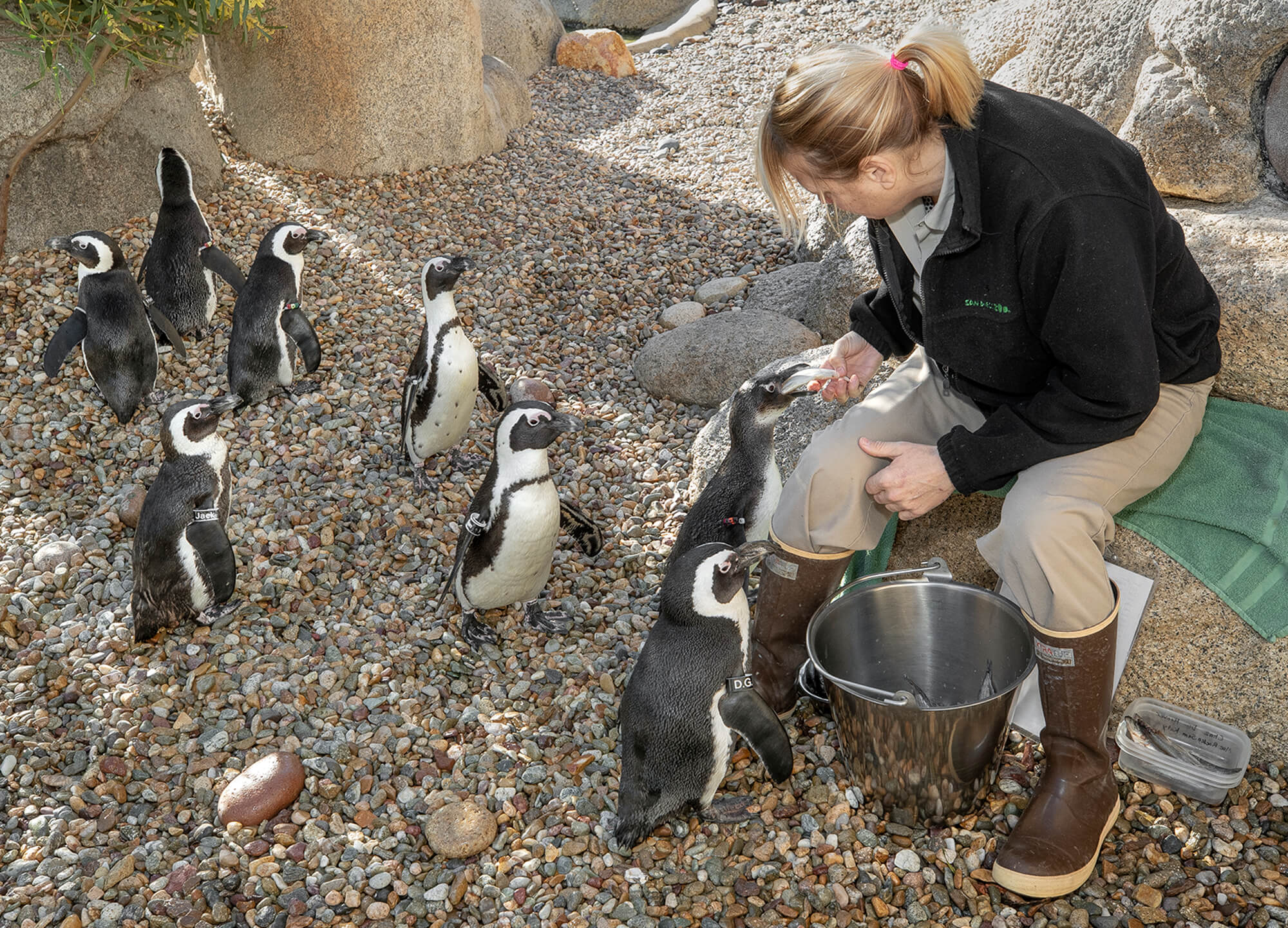
HOW TO DRAW A CROWD
Twice a day, the Zoo’s African penguins gather on the beach for fresh fish—hand fed to them by a keeper (in this case, Debbie Denton), who will also do a visual assessment of each bird.
 If you can’t visit Africa Rocks, you can always catch up with our African penguins on Penguin Cam. Click here for live streaming video from the exhibit.
If you can’t visit Africa Rocks, you can always catch up with our African penguins on Penguin Cam. Click here for live streaming video from the exhibit.
Back at Africa Rocks
On a typical day at the Zoo’s Cape Fynbos, keepers come in and clean the exhibit in the morning, check the nest boxes to see if there are any new eggs, and cut vegetation, Debbie said. “Animals get weighed twice monthly, and weights are taken in the morning before the feedings. Visual exams are done whenever keepers are in with the animals, but it is especially easy during the morning feed, because all the animals approach the keeper and wait to be handed a fish.”
They all get a daily vitamin, which is stuffed in the gills of a fish and fed to them. “We watch to see that nobody’s limping, and that everyone’s appetite is good—and we’re standing here and observing,” Debbie said. “Much of the first year of this exhibit, we spent a lot of time just watching what was going on and where they hang out in the exhibit—and who they were interacting with and the relationships that were forming—and keeping an eye out for any behavior that might indicate an individual is going through something, as they mask illnesses very well.”
Each day, visitors can watch the penguins’ first feeding shortly after the Zoo opens at 9 a.m. and the second feeding in the afternoon. “It’s at around 2:30 p.m. now, but that changes to around 4 p.m. in summer,” Debbie said. “And when they get ready to molt, their appetite will double. They eat so much I wonder, ‘where are you putting that?’”
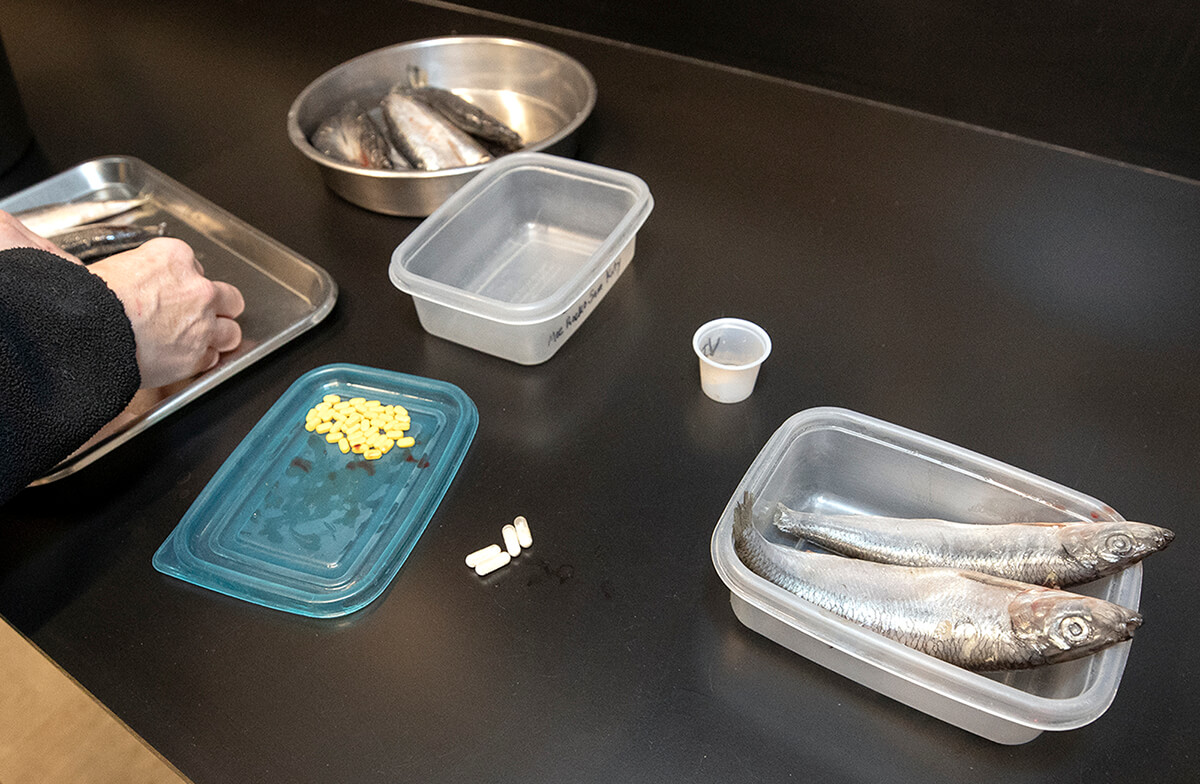
FORTIFIED FISH
Keepers tuck a vitamin inside the gills of fish that will be hand fed to the Zoo’s African penguins.
No matter what time guests get to Cape Fynbos, there’s a lot to see—from underwater high-speed “flight” to penguins jockeying for prime positions on the rocky beach. “The exhibit was modeled after Boulders Beach in South Africa, and I have visited there,” Debbie said. “And I can tell you, this looks a lot like their wild habitat—a natural colony. Most penguin exhibits are quite generic. This one really re-creates their habitat. They can use the whole pool, and they get 180 feet to swim in. This exhibit fits so beautifully in Africa Rocks, and it gives you a sense of being there.”
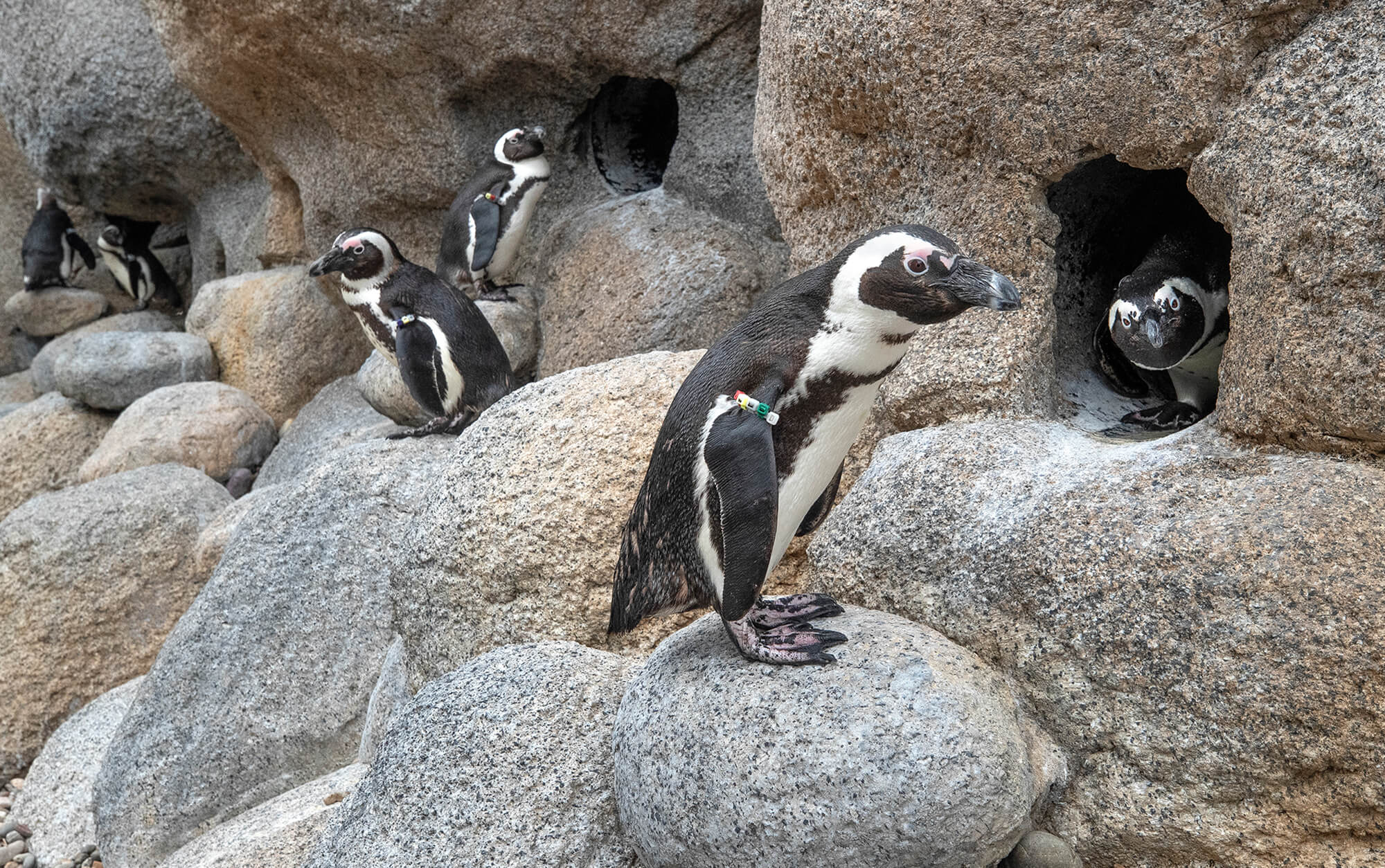
ON THE ROCKS
If you don’t see the African penguins in the Cape Fynbos exhibit’s 200,000-gallon pool, odds are they are hanging out on the pebble beach or, during mating season, burrow nests that are hidden inside the rockwork.
Tuxedo Birds with Tales
The name of each African penguin at Cape Fynbos is printed on its wing band. Not only does each penguin have a name, each has its own story. You can find out more about them on upcoming episodes of Penguin Beach on the Zoo’s Facebook page. Here’s a quick guide to who’s who from penguin keeper Debbie Denton.
AUSTIN: Heavyset and on a diet, he’s the not-too-thoughtful partner of Elizabeth.
ELIZABETH: She’s devoted to Austin, who doesn’t share nest duties very well.
BRECKEN: This shy female is surprisingly protective of her partner, Chaz.
CHAZ: Brecken’s partner has proven himself to be quite a good catch.
CANNON: A rebellious young male penguin with an argumentative streak.
GAYLE: Cannon’s partner, and a fierce competitor at the feeding bucket.
COURTNEY: She’s devoted to her nest and her partner, McKinney.
MCKINNEY: He loves the keepers and Courtney, too.
DAN: He’s Molly’s flirtatious partner, and he has a roving eye.
MOLLY: This independent female has no interest in keepers, but she’ll follow Dan to any nest box.
DANNY: He’s a master nest builder who is loyal to his partner, Malloy.
MALLOY: She’s a homebody who loves her nest.
DG: This older male’s longtime partner, Harlan, left him for a female named Katy. DG found a nest and began hanging out with Lori, until Lori’s partner Jack showed up. DG spends a lot of time with keepers now.
DOT: The colony’s youngest girl, age one, loves swimming and loves her keepers.
HARLAN: He’s very protective of his partner, Katy, and he challenges anyone who gets too close to her.
HOOVER: He came to the Zoo with his longtime partner, Rocko, and they remain devoted to each other.
ROCKO: He and Hoover have such a good relationship that they might be responsible enough to receive a “foster egg” to care for.
JACK: He’s grown from an awkward youngster to a more confident adult, and he’s now paired with Lori—although she isn’t quite as serious about the relationship as he is.
LORI: She’s an incorrigible flirt. When she isn’t out looking for the boys, she spends most of her time in the water.
KATY: This older female once had to share her former partner, Mac, with Vi. Then Katy met Harlan, and she forgot about Mac—and Harlan left his longtime partner to build a relationship with her.
LUCAS: This one-year-old male gets very jealous when keepers pay attention to any other bird besides him.
MAC: He watches over his older partner, Vi, and he’s very protective of her.
MOE: This older male met his partner Sam at the Zoo before moving into the exhibit at Africa Rocks. They have remained together ever since.
SAM: He’s devoted to Moe, and the two are best friends.
NORINNE: While this female likes some of the keepers, she has really fallen for her partner, Simon. She followed him for a long time before he took notice of her.
SIMON: He was known as a “friendly guy” when he first came to the Zoo—but since then he’s turned all his attention toward his partner, Norinne. Keepers say he’s not as friendly anymore. Still, he’s one of the nicest birds in the colony.
PARKER: This female likes the keepers, and she enjoys interacting with them.
PRINCE: He hatched on the day rock ‘n’ roll legend Prince died, and was named for him. Our Prince wears a distinctive purple band, and he is quite protective of his sister, Parker.
SCOTT: This male was single for a long time—and now that Tinka is his partner, he has become very protective of her.
TINKA: She used to love hanging out with keepers, jumping in their laps, preening them, and following them everywhere. However, now she’s more interested in her partner, Scott.
VI: This 27-year-old matriarch of the colony has a protective and much younger partner, Mac.

